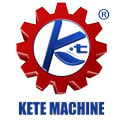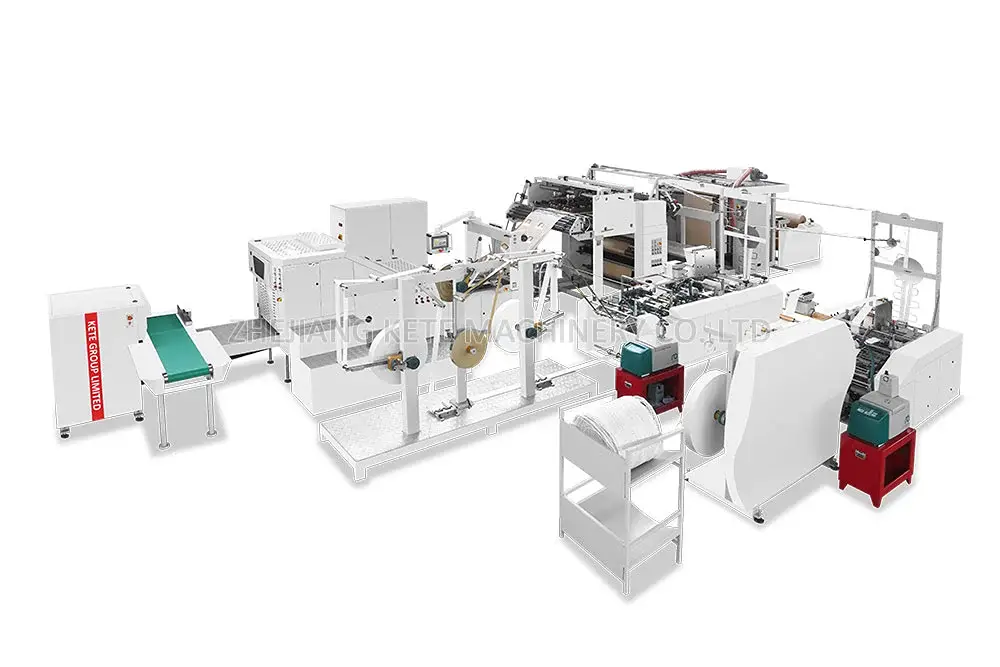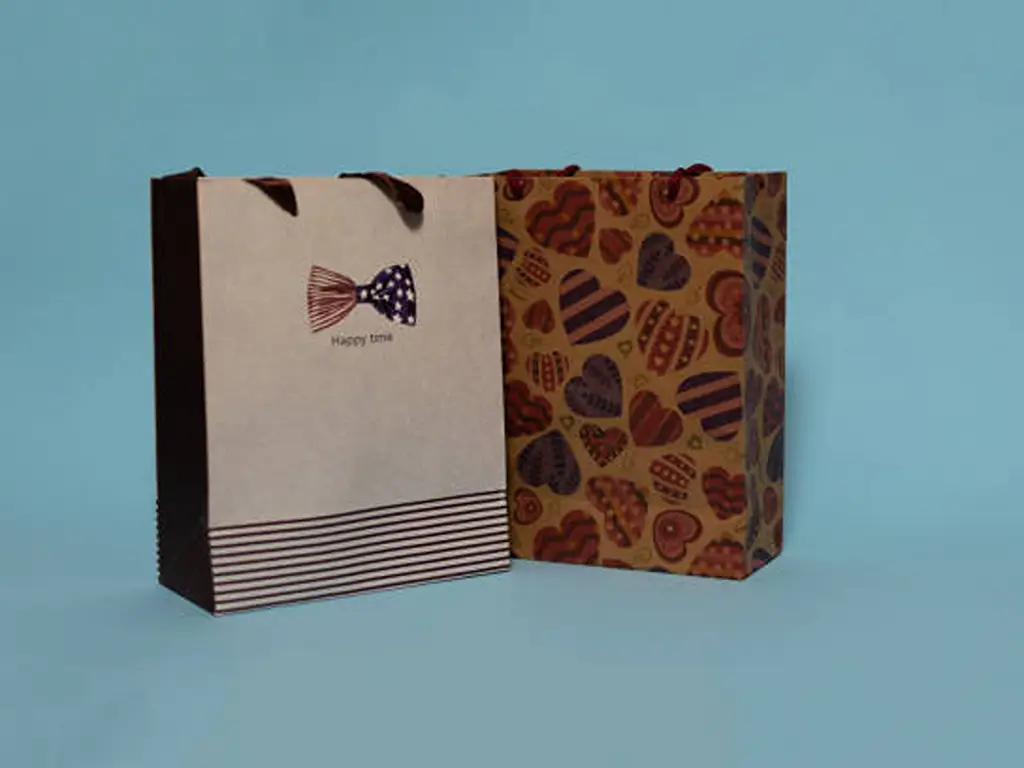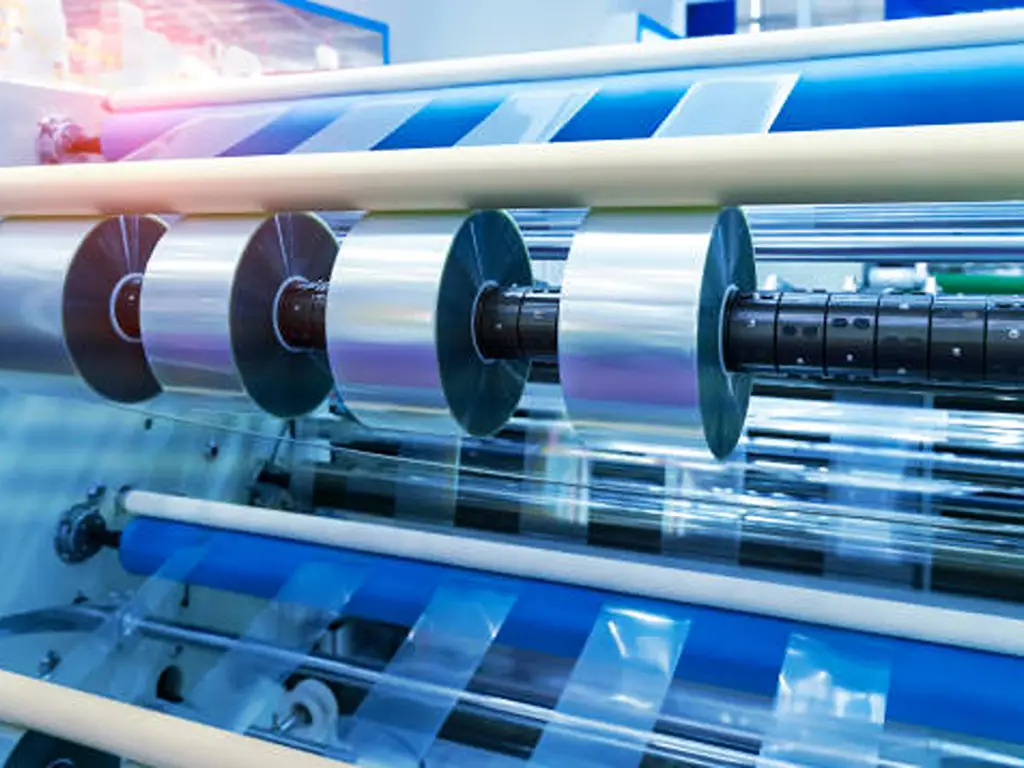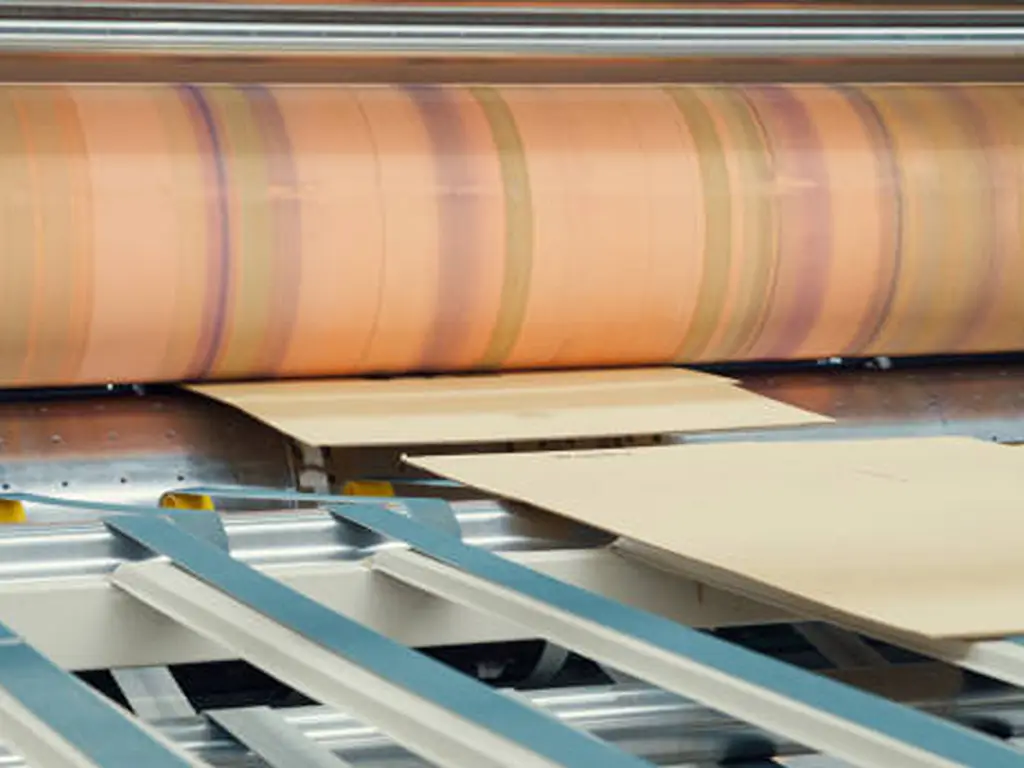In any business today, efficiency always comes first. Consider a production line in a factory as a river where the raw materials are continually moving downstream. Each production step on the line is akin to a ‘gate’ where materials are not simply pushed through, but instead cut, modified, and reorganized in a hierarchically structured fashion which allows them to be forwarded to more work processes. Out of all the slitting and rewinding devices, turret slitter rewinders, also known as turret rewinders or automatic turret rewinders, are the most favored due to their design and how well they increase company productivity. They automate the final production steps, resulting in faster output and greater productivity overall.
What Is a Turret Slitter Rewinder?

As the name suggests, a turret slitter rewinder is a sophisticated machine used for continuous, high-speed slitting and rewinding process of materials that come in a roll. The most distinguishing feature of such a machine is the “turret” structure which is mounted to the spindle and rotates about a central axis. It usually has two or more rewind shafts. Unlike traditional single or duplex slitter rewinders which permanently suspend operation to unload a full roll and load a new core, the turret design enables slackless switch over of rewind shafts by turret rotation with low speed or static deceleration. Thus, uninterrupted production is achieved.
How the Turret System Works?
The efficient operation of a turret system relies on a seamless sequence of automated processes. When the machine detects that the current rewind shaft is about to reach the preset length or diameter, the automation sequence is triggered. First, a precise cutting mechanism performs a cross-cut of the material at high speed. Next, the leading edge of the new material is automatically guided and attached to an empty core positioned on the other side of the turret, usually done by an automatic tape applicator (related to automatic core loading). Subsequently, the turret quickly rotates 180 degrees (for a dual-turret system), bringing the shaft with the new core into the winding position while moving the completed full roll out of the working area. These completed rolls can be safely unloaded by the operator while the machine continues to run, and new cores can be loaded (this action often includes automatic core loading) in preparation for the next changeover. This entire process is precisely coordinated, like a perfect baton pass in a relay race, accurate to the millisecond, minimizing non-productive downtime and ensuring smooth production flow.
Why Should Converters Invest in a Turret Slitter Rewinder?
For converters focusing on high volume production of roll substrates, adopting turret slitters is a major investment towards improving competitiveness. This does not only bring a gain in speed, but also a complete shift in the production model. The benefits of turret technology are particularly evident.
By far the most immediate gain is in production efficiency and relative throughput. Reduction of idle time spent on roll turnover dramatically boosts the ratio of processed output to time when operating on a high number of low volume small diameter rolls, common in short run work. For such applications, a turret slitter rewinder is often the ideal solution.
In addition, it helps optimize the operational cost structure. Greater efficiency achieves higher production numbers for a given time frame, which, in turn, reduces hr of labor and energy spent on other non-value adding streams. Further, automated systems diminish the need for skilled operators, reducing error and waste of materials.
Furthermore, while we have advanced features on tension control and web guiding systems for streamlined slack free unwinding, robust slicing, and precise rewinding, precision enhanced turret machines tend to do better. The result is well homogenized flat profile rolls that are continuously wound without step formation and without crude edges. This always satisfies and at the same time exceeds customer expectations. Reliable quality strengthens customer loyalty while protecting and enhancing brand image.
Lastly, purchasing a turret slitter rewinder increases flexibility in production. It allows wider variety and greater changeover frequency in materials , thus enabling quicker business response to market shifts and tailored requests.
What Materials Can Be Processed?
Turret slitter rewinders demonstrate excellent material compatibility and can stably and efficiently process a wide variety of flexible web materials, including common ones like:
- Various plastic films (e.g., BOPP, PET, CPP, PE, PVC used for packaging, agriculture, or industry)
- Paper and paperboard
- Laminates (e.g., paper-plastic, film-plastic laminates)
- Non-woven fabrics
- Metal foils (e.g., aluminum foil)
- Various types of pressure-sensitive tapes and industrial tapes
- Various roll-form label materials
- Certain special textiles
Different materials require different machine setups and operating conditions. For instance, the handling of thin films necessitates more exact tension control coupled with anti-static measures. Conversely, thicker paper or rigid materials might need higher slitting forces with different knife angles. Custom solutions aligned with the customer’s primary materials are offered by knowledgeable practitioners.
Industries and Applications of Turret Slitter Rewinder

Turret slitter rewinders are indispensable equipment in many industries that rely on web material processing, and their applications are widespread:
- Industrie de l'emballage : Producing various soft packaging film rolls and laminate rolls for automated packaging lines in food, beverage, daily chemical, pharmaceutical, and other industries.
- Label Printing and Converting: Often involves integration with processes like rotary die cutting, utilizing a rotary die or a rotary die cutter, before slitting various paper and film label materials into rolls for labeling machines.
- Fabrication de rubans : Slitting wide master rolls of tape into finished rolls of desired widths.
- Paper Product Converting: Slitting special paper, releasing paper, wallpaper, etc., for use in printing, construction, industrial, and other fields.
- New Energy Industry: Precisely slitting and rewinding materials like separators and current collectors in the manufacturing of lithium batteries and photovoltaic films.
- Hygiene Products Industry: Slitting non-woven fabrics and other materials.
We may say that the turret slitter rewinder serves as a ‘fast lane’ in the industrial production process wherever large, wide rolls of material need to be reduced into smaller, narrow rolls and high efficiency is a requirement.
Selecting the Right Turret Slitter Rewinder
A thorough evaluation is critical when picking a turret slitter rewinder that will consistently meet the requirements of your business operations for years to come:
Define Your Production Needs
Start by examining your existing and prospective production scenarios: What are the primary product categories you deal with? What are your sales forecast and production growth? Specify raw material properties such as width, thickness, elongation, etc. Streamlined finish roll vision quality and the degree of automation targeted are also noted. Defining your criteria accurately will aid in meeting objectives.
Evaluate Key Specifications
Evaluate the machine’s most important technical features to see if they fit your requirements. Check if the maximum working width and mechanical speed satisfy your throughput expectations. Also check if the maximum unwinding and rewinding diameters correspond with your roll sizes. Does the minimum slitting width conform with your product requirements? Will the tension control system reliably manage your materials? Is the slitting method (shear, razor, crush) appropriate for your materials and your processing steps? When evaluating capabilities, considering factors like maximum web widths is essential.
Assess Required Automation
Different turret machines have varying levels of automation. Besides the basic automatic functions of roll change, cutting, and taping, what other functionalities are needed? Core positioning, unloading of finished rolls, knife positioning, and inline inspection systems are examples of additional automation. As with most machines, an increase in automation will lead to a greater initial investment. However, automation can lead to far greater benefits in the long run. Consider your budget and urgency determiner efficiency improvements while weighing the desired level of automation.
Consider Manufacturer & Support
It is essential to select a reliable and trustworthy manufacturer. Look at their experience in the industry, technical capabilities, manufacturing processes, and their quality control systems. At the same time, the processes covering pre-sales consultation, machine design, equipment installation, commissioning, operation and maintenance training, as well as consistent and dependable after-sales service and parts supply, contribute toward ensuring that the machine functions efficiently and at optimal performance.
Maintenance and Troubleshooting

A turret slitter rewinder, being a precision machine, requires regular and systematic maintenance. This involves the combined efforts of operators and maintenance personnel. Timely maintenance is fundamental for the optimal operation of a turret slitter rewinder over extended periods. Poor or no maintenance can damage the equipment, shorten its useful life, and even cause production halts alongside expensive repairs. For our clients, here are some maintenance and troubleshooting tips you can apply:
Daily (Per Shift) Checks and Cleaning:
- Surface Cleaning: Carefully unclothe the machinery and cleaning coverings of any dust, leftover materials, or labels. Excess moisture should be avoided in electrical components.
- Work Area Cleaning: Trim, excessive material, and adhesive should be removed immediately from the slitting and rewinding spaces, and the knives and idler rollers should also be cleaned.
- Idler Roller Check: Confirm that each idler roller is clear and spins without restriction from materials or adhesives that could cause friction drag.
- Air Pressure Check: Check that the primary air supply pressure is within the machine’s operational limits and ensure that the air preparation unit (filter, regulator, lubricator) is working properly and that the drain valve is functional (if required).
- Safety Check: Check the functionality of the emergency stop buttons, the safety gate switch, light curtains and all other critical safety apparatuses.
Weekly Maintenance Tasks:
- Lubrication Points: Following the manufacturer’s lubrication chart, apply lubricants to all points needing lubrication (For example: bearings, linear guides, chains etc.). Do not apply excess lubricants.
- Drive Component Check: Inspect the tension of both belts and chains for appropriate tightness and wear. Also check the oil level in gearboxes where applicable.
- Knife Check and Cleaning: Examine the surfaces (both circular and razor) of the slitting knives for sharpness, nicks, and adhesive buildup. Clean or replace as necessary.
- Pneumatic Line Check: Check all air hoses for aging, hardening, or damage. Ensure all fittings are tight and do not leak..
Periodic Maintenance (Monthly/Quarterly/Annually):
- Electrical Connection Check: (Must be performed by a qualified electrician) Ensure that all terminal connections both inside and outside the control cabinet are secure and that no cables are damaged. Electrical components must be free of dust.
- Sensor and Actuator Check: Check for proper operation and accuracy within allowable limits for sensors (photoelectric, proximity, tension) and actuators (servo motors, cylinders).
- Bearing Check: Check for abnormal noise or excessive heat from bearings. Replace if needed.
- Air Shaft Check: Inspect for damage and excessive wear of keys or lugs. Confirm proper operation of inflating and deflating air shafts.
- System Calibration: Regularly calibrate control components including tension control system, web guiding system, and length counter.
- Software Backup: Perform backups for control sequence programs and parameters for the given machine.
Common Troubleshooting (Operator Level):
- Issue: Finished roll shape is “tapered” or “dished.”
- Possible Causes: Incorrect tension settings, variations in material thickness, core problems, nip roller pressure, unwind shaft issues.
- Initial Steps: Change in tension for rewind, evaluate core integrity, examine the roll of material, evaluate nip roller pressure, clean shafts related to rewind and check inflation or change tension.
- Issue: Slit material edges are rough or have fused strips.
- Possible Causes: Blunt or poorly aligned and fitted blades, lack of adequate pressure exerted by knives, inconsistencies in raw materials, selection of slitting method was done incorrectly.
- Initial Steps: Clean or replace knives, enhance knife overlap along with exerted pressure, check for material inconsistencies.
- Issue: Automatic roll change fails to attach material to the new core.
- Possible Causes: Out of supplied tape or malfunctioning tape applicator, wrong position placed for taping, surface of core defect, unsymmetrical cut of the material, air pressure too low.
- Initial Steps: Replace tape and check movement of applicators, check surface of core, adjust position for cutting or check knives.
Routine slitter rewinder preventive maintenance is the “lifeline” that guarantees the enduring reliability of a turret slitter rewinder’s operation.
Partnering With a Slitting Machine Expert

A reliable partner is similar to having an experienced guide while sailing, helping you navigate safely through winding waters. With such equipment suppliers, there is a lack of proper assistance in delivering full support and worth throughout the lifespan of the machine.
This is where companies like KETE stand out. KETE offers a range of high-performance, high-quality turret slitter rewinders, including advanced models like the KTSM-C600T series, designed for high-speed, efficient production. With the core team’s experience of more than 30 years and a legacy of manufacturing since 1983, KETE has a deep understanding of the industry. His equipment is backed by strict quality assurance (ISO 9001, CE, RoHS) certifications which ensures global reliability. KETE has a presence in over 80 countries and has vast experience in international trade, which guarantees dependable shipping and worldwide assistance. KETE gives specific customized options together with all-encompassing consultancy, honest progress reports, packaged delivery, and thorough after-sale services including warranties and training. KETE not only delivers advanced machinery, but also offers unwavering expert guidance so his customers can always feel at ease.
Conclusion
Because of its distinct capability of continuous production, the turret slitter rewinder is one of the most powerful modern aids for the enhancement of efficiency and capacity in web material converting. Gaining maximum value from the machine requires familiarity with its design and functionality, its applications, operational and maintenance procedures, intensive upkeep, and its maintenance procedures. In addition, having a partner like KETE that has ample experience, renowned in the field, has reliable technical competence, excellent infrastructure, and a complete back-up system ensures the investment made will be protected and maintained for many years. Here, it is not only about one machine’s productivity, but about the entire manufacturing ecosystem and the resilient advancement of your company.
